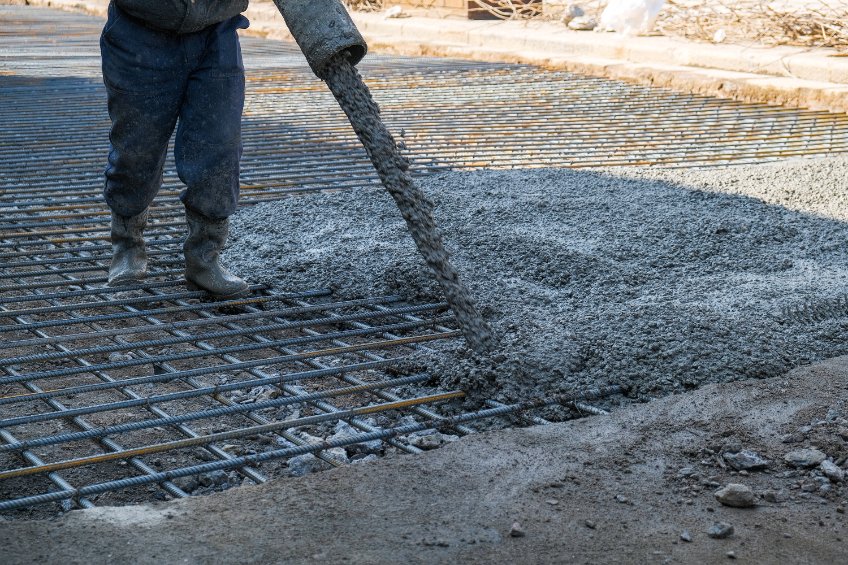
Now that the heat has fully settled in, it’s important to discuss the impacts of temperature when pouring concrete. The best time to pour concrete is between 50 and 60 degrees, but we know that in Utah, that would give us a very small window to complete all the necessary jobs. Therefore, we need to be flexible and prepare for the unpredictable weather that we know and love (or hate) in our state.
Warmer temperatures mean concrete sets quickly. For example, concrete poured in 40-degree temperatures will need about 14 hours to set. Concrete poured in 100-degree temperatures only need about an hour and a half. Concrete setting too quickly can be problematic, which is why caution is needed for these hot projects.
In preparation for a concrete project in very hot temperatures, you’ll want to take a few steps. Crews need to have concrete supplies and all equipment ready to use and in working condition. The subgrade and forms must be moist in order to not absorb the water from the mix, and they must use materials that perform well in higher temperatures. Crews will also need to prepare with sunshades and windbreaks to protect not only the concrete but also the safety of the workers working under harsh conditions. Finally, the team must be ready as soon as the mix truck arrives to avoid any delays.
If possible, avoid pouring concrete over 100-degree days. If that’s not possible, concrete should be poured in the late evening or the early morning hours. The crew must have hydration and shade with enough on the job to allow for breaks. Heat stress is a real concern for outdoor workers in the summer, and a person’s health is the highest priority. Taking precautions ensures that safety of the crew as well as a quality job.
Because the heat reduces the setting time of concrete, the crew has to work quickly. This can be strenuous and does not allow for mishaps. It’s important to work together and collaborate throughout the entire project. Also, if the moisture evaporates too quickly, it can lead to cracking, reducing the overall strength of the cement. It’s likely that concrete poured in 70 degrees will be stronger than concrete poured at 90 degrees. An increase of just 20 degrees can reduce the setting time by almost half.
Because we simply must pour concrete in hot conditions in our state, there are some methodology changes that can be made. For example, chemical additives are available to help the concrete reach full strength more quickly. We can add water and ice to maintain a cooler temperature in the mixing water as well as spraying the aggregates with water to bring temperatures down. Liquid nitrogen can also be used for a more predictable and consistent temperature and is cost effective.
About a month after the project is completed, you can apply a quality sealer to a hot-weather pour to provide some added durability. With the many factors affecting concrete’s longevity, it’s a good idea to leave it to a professional, like Lift Right Concrete.